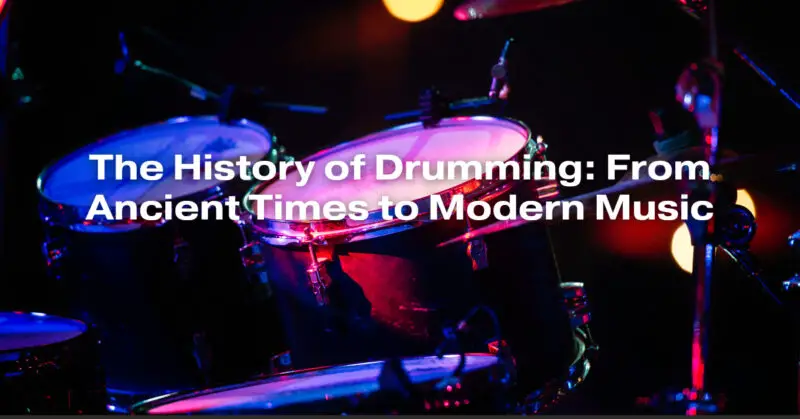Drumming is the beating heart of music, and its history is as old as human civilization itself. From the primal rhythms of ancient tribes to the intricate patterns of modern drummers, this journey through time explores the fascinating history of drumming. We’ll trace the evolution of drums and percussion instruments, uncovering their cultural significance and enduring influence on music across the ages.
The Dawn of Drumming: Ancient Civilizations
- Primitive Percussion: Drumming’s origins date back to prehistoric times when early humans used simple percussion instruments made from natural materials like logs, rocks, and animal skins for communication, ritual, and celebration.
- Mesopotamia and Egypt: In ancient Mesopotamia and Egypt, drums were integral to religious ceremonies and military processions. The mesmerizing rhythms of frame drums and hand drums played a pivotal role in cultural expression.
The Beat of Battle: Drums in Warfare
- Military Drumming: Drums have long been employed in military contexts for communication, coordination, and intimidation. Explore the use of snare drums, bass drums, and bugle calls in warfare.
- Fife and Drum Corps: During the American Revolutionary War, fife and drum corps played a crucial role in boosting soldiers’ morale and maintaining order on the battlefield.
The Birth of Jazz: Drumming in America
- New Orleans and Jazz: The birthplace of jazz, New Orleans, introduced groundbreaking drumming techniques. Pioneers like Baby Dodds and Papa Jo Jones revolutionized jazz drumming, emphasizing improvisation and syncopation.
- Swing Era: The swing era saw the emergence of legendary drummers like Gene Krupa, who popularized drum solos and introduced the drum set as a featured instrument in big bands.
Rock ‘n’ Roll Revolution: The Power of Drumming
- Rock Drumming Icons: The advent of rock ‘n’ roll brought explosive drumming to the forefront. Drummers like Keith Moon (The Who) and John Bonham (Led Zeppelin) pushed the boundaries of drumming with their virtuosic and energetic performances.
- Rhythmic Innovations: The development of double bass drumming, blast beats, and intricate rhythms in rock and metal genres expanded the possibilities of drumming techniques.
Global Percussion: Diverse Rhythms and Traditions
- African Rhythms: African drumming traditions, including the djembe and talking drum, have left an indelible mark on world music. These rhythms continue to inspire musicians worldwide.
- Latin Percussion: Latin America’s percussion heritage features the congas, bongos, and timbales, contributing to the infectious rhythms of salsa, samba, and more.
Contemporary Drumming: Today’s drummers, like Questlove, Sheila E., and Travis Barker, continue to shape the landscape of drumming with innovative techniques and styles, bridging the gap between tradition and modernity.
Conclusion
“The History of Drumming: From Ancient Times to Modern Music” is a rhythmic journey through time, unveiling the enduring power and cultural significance of drumming. From ancient rituals and battlefield marches to the electrifying rhythms of rock ‘n’ roll and the global diversity of percussion traditions, drumming has transcended boundaries and continues to evolve. As drummers and music enthusiasts, we honor this rich history while adding our unique beats to the ever-expanding tapestry of music.


